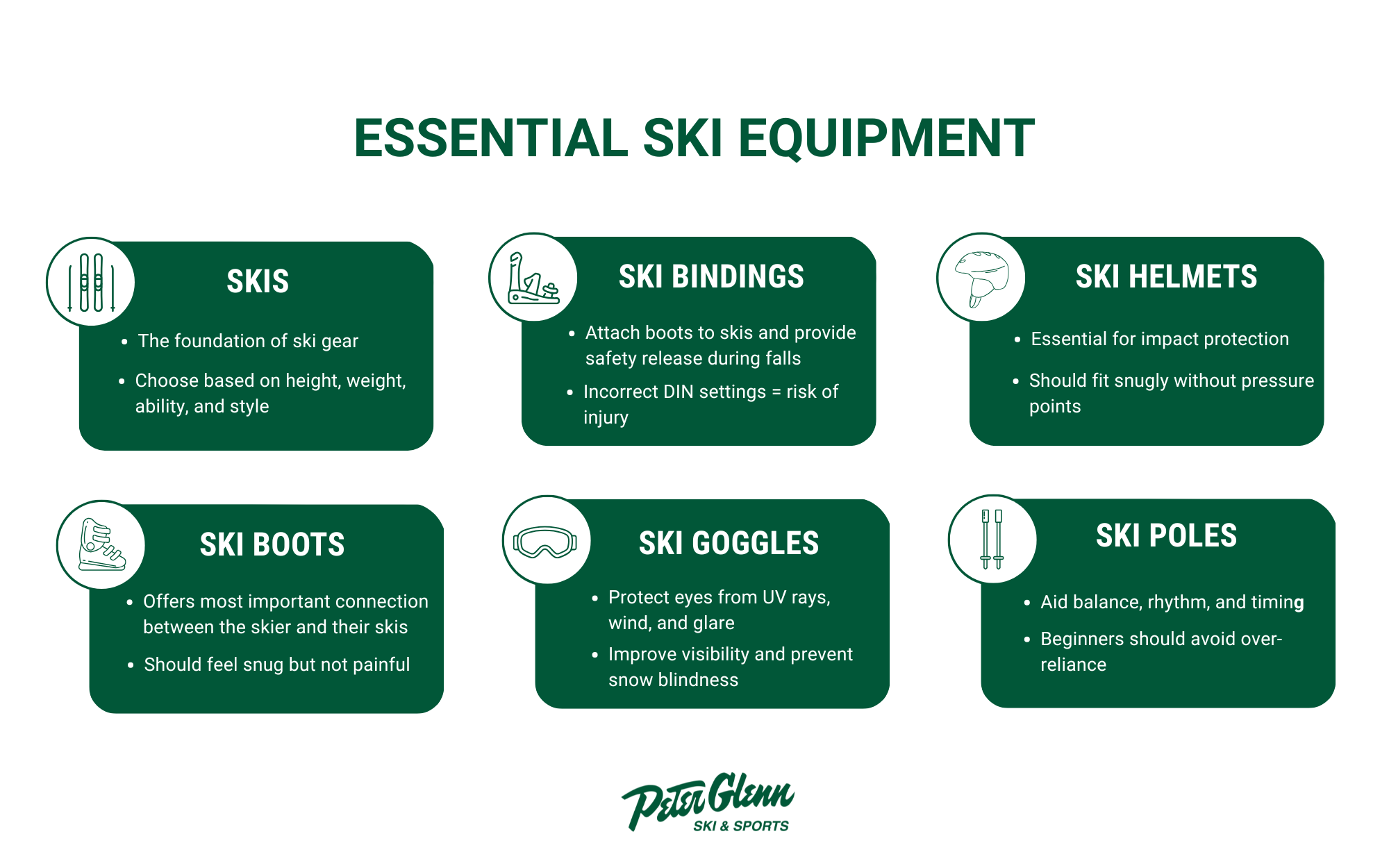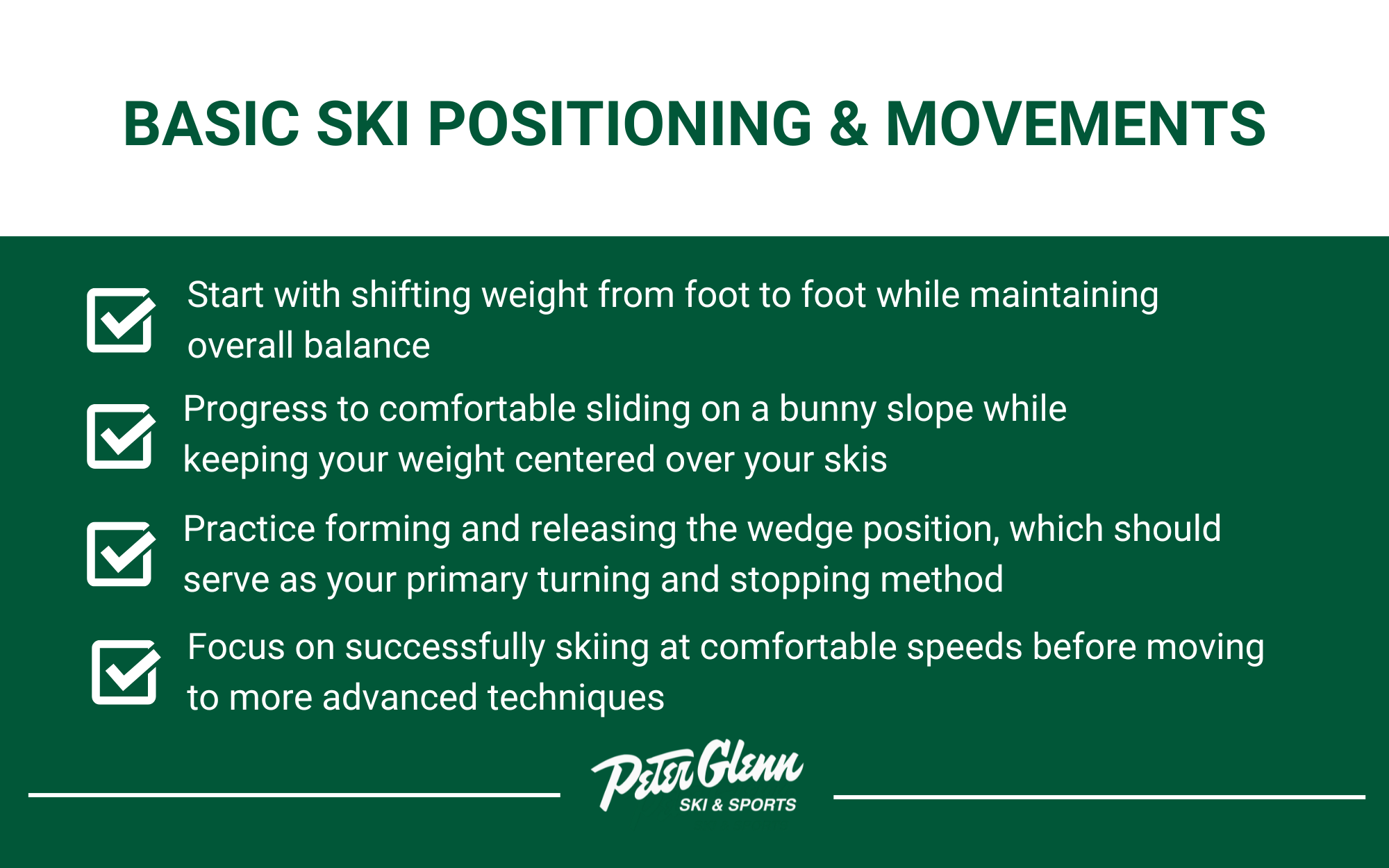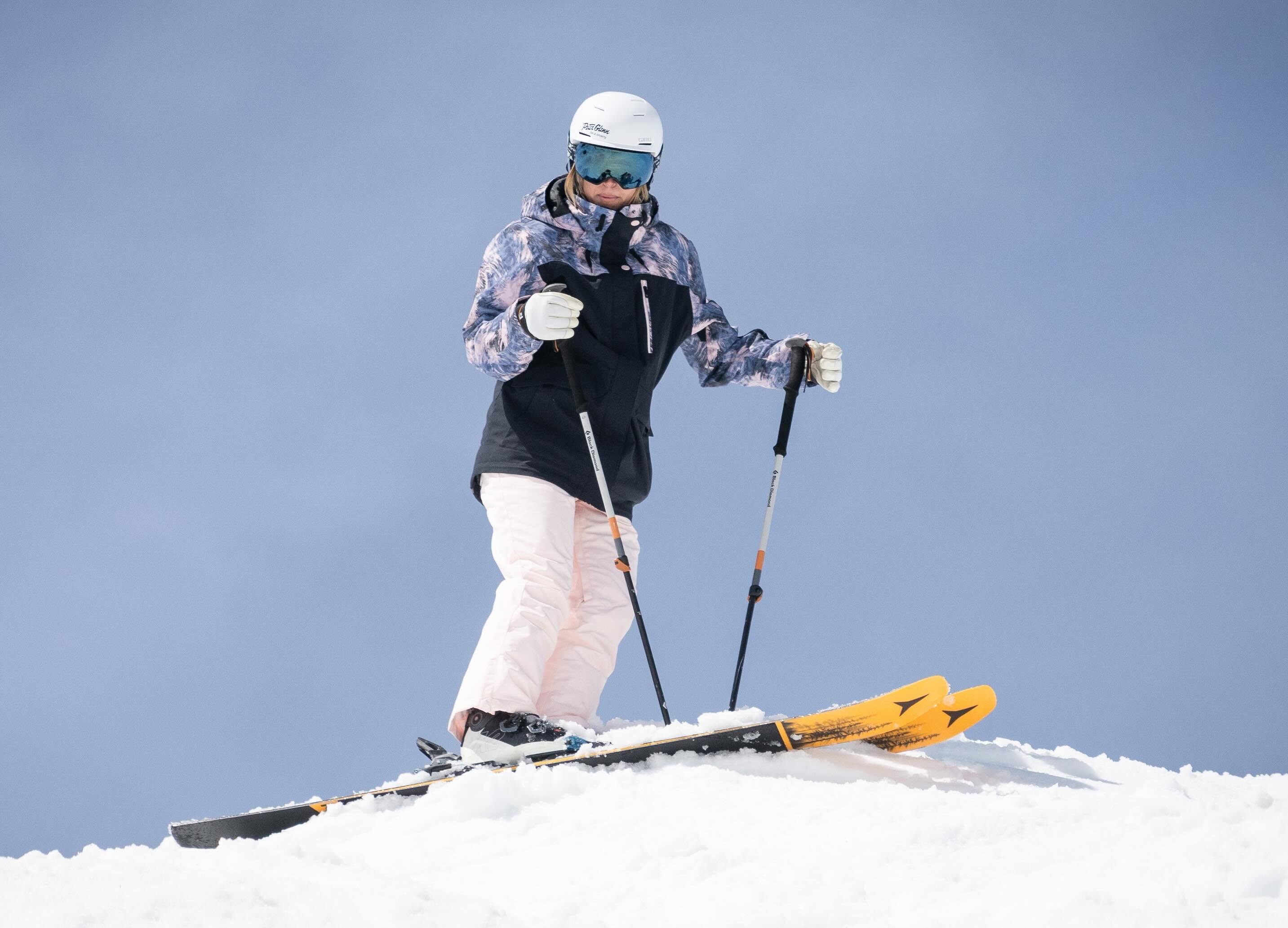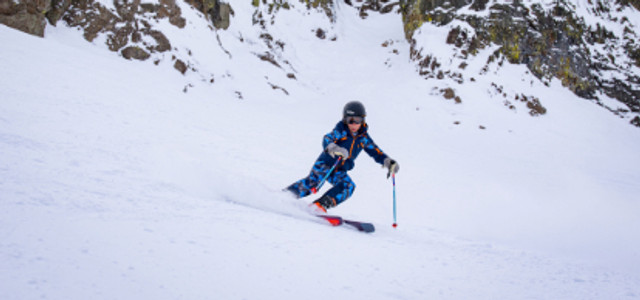How to Ski: Getting Started on the Slopes
Posted by Peter Glenn Staff on Sep 22nd 2025
Table of Contents
The Short Answer: Learning to ski involves getting proper equipment and appropriate clothing, mastering basic body positioning with a centered stance and relaxed knees, and prioritizing safety through professional instruction and an understanding of mountain etiquette.
Understanding the basics of skiing is crucial for both safety and long-term enjoyment on the mountain. Skiing is a complex sport that requires coordination of multiple body movements while navigating varying terrain and snow conditions at speed. Many people skiing for the first time underestimate the physical and technical demands, leading to frustration, injuries, or the development of poor habits that become difficult to correct later.
Proper instruction and an understanding of fundamental principles creates a solid foundation for lifelong skiing enjoyment and continued skill development. The investment in learning correct techniques from the beginning pays dividends in faster progression, reduced injury risk, and greater confidence across all mountain conditions.

Getting Started
Ski Equipment
Skis
These are the foundation of your skiing equipment and should match your skill level, physical characteristics, and intended skiing style. Length selection depends on your height, weight, and ability level, with shorter skis offering more maneuverability while longer skis provide stability at higher speeds. Ski width also affects your ride, with narrower skis excelling on groomed runs and wider skis providing better performance in powder.
Ski Boots
Boots form the critical connection between your body and skis. Your boots should feel snug without creating pressure points that cause pain or restrict circulation. Your heel should remain firmly seated in the boot, while your toes should have slight movement room when standing normally. The boot should feel secure around your ankle and lower leg without being overly tight.
Ski Bindings
These connect your boots to skis while providing crucial safety release mechanisms during falls that prevent serious leg injuries. These sophisticated devices automatically release when dangerous twisting or forward forces occur, but they must be properly adjusted by qualified professionals based on your weight, height, skiing ability, and age. Never attempt to adjust DIN release settings yourself, since incorrect settings can either release unexpectedly during normal skiing or fail to release during dangerous falls.
Ski Poles
These assist with balance, timing, and rhythm rather than providing propulsion or primary support. Proper pole length reaches approximately armpit height when standing upright on flat ground, though slightly shorter poles can help beginners with balance. Many beginner skiers rely too heavily on poles for balance, but they primarily serve as timing aids for turn initiation and provide balance assistance on flat terrain and during lift loading.
Helmets
These provide impact protection and should fit snugly without pressure points while accommodating goggles comfortably. Modern helmets offer excellent protection while maintaining adequate ventilation and allowing normal hearing for safety awareness. The helmet should sit level on your head without tilting forward or backward. The chin strap should be snug, but not restrictive.
Goggles
These provide eye protection against UV radiation, wind, and snow glare that can cause snow blindness and reduced visibility. Proper goggle fit creates a seal around your face without pressure points, while anti-fog coatings and ventilation systems prevent lens fogging during temperature changes and physical activity.
Appropriate Ski Clothing
Most ski outfits follow layering principles with moisture-wicking base layers, insulating mid-layers, and waterproof outer shells. Ski-specific clothing includes features like powder skirts on jackets, reinforced areas on pants, and strategically placed pockets. Avoid cotton materials that lose insulating properties when wet and retain moisture against your skin.
Understanding Ski Gear Sizing
This can prevent equipment-related problems that can lead to injuries or poor performance. Incorrectly fitted equipment significantly increases injury risk and hampers learning progress. Ski length depends on your height, weight, and ability level, with shorter skis being more maneuverable for beginners. Boot sizing differs substantially from street shoe sizing and requires professional fitting to ensure proper performance and comfort.
Safety
The National Ski Areas Association’s responsibility code highlights basic mountain etiquette and how safe behavior on the mountain can prevent accidents and misconduct.
- Right-of-Way: The fundamental right-of-way rule requires yielding to downhill skiers, as they cannot see approaching traffic from above and have limited ability to change direction quickly
- Maintaining Constant Control: Make sure you’re skiing at speeds that allow you to stop or avoid obstacles within your line of sight
- Visibility: Always stop in locations where you're visible from above and not blocking narrow passages or blind spots where other skiers might unexpectedly encounter you
Understanding Trail Ratings
While exact ratings can vary by location and terrain, they can help you match terrain to your ability level and prevent dangerous situations.
Green Circles
These indicate beginner runs with gentle slopes, typically featuring wide runs and forgiving terrain.
Blue Squares
These represent intermediate terrain with moderate steepness between 25-40% grade that may include narrower runs and some obstacles.
Black Diamonds
These mark expert runs with steep terrain exceeding 40% grade, featuring challenging conditions like moguls, ice, or narrow passages.
Double Black Diamonds
These indicate extremely difficult terrain requiring advanced skills, often including cliffs, very steep pitches, or dangerous exposure.
Remember that these ratings are relative to each mountain, so a green run at a challenging ski resort might be more difficult than a blue run at a beginner-friendly mountain. Check the rating system for the area you’re skiing in before getting on the slopes.
Learning from Experienced Skiers or Professionals
Professional ski instructors understand proper progression sequences, can identify and correct technique problems early, and provide crucial safety guidance specific to local conditions. Self-teaching or learning from well-intentioned friends often leads to ingrained bad habits, safety oversights, and frustration that professional instruction easily prevents. Even only one or two lessons from a qualified professional can significantly improve performance and help new skiers get comfortable on the mountain.

Proper Positioning and Balance on Skis
A proper stance allows quick responses to terrain changes and keeps you in control of your skis.
- Maintain a centered position over your skis with weight distributed evenly between both feet
- Achieve a slight forward lean from your ankles (not bending at the waist)
- Keep your knees relaxed and slightly flexed
- Position arms comfortably forward with poles pointing slightly ahead
This balanced position keeps you in control of your skis instead of fighting to maintain balance.

Weight Distribution and Balance Techniques
On flat terrain, begin with stationary exercises to develop feel for your equipment. Practice shifting weight from foot to foot while maintaining overall balance, then progress to gentle gliding movements. Focus on keeping your weight centered over your skis rather than leaning backward, which is a common beginner mistake that reduces control and makes turning difficult.
Basic Movements
- Start with comfortable straight running (gliding) on a bunny slope to develop confidence and feel for ski movement across snow
- Practice forming and releasing the wedge turn position, which creates a triangular ski pattern by angling ski tips together while keeping tails apart
- This position, which naturally creates drag that slows your speed, should serve as your primary speed control and stopping method
Building confidence occurs through controlled movement on gentle slopes with gradual progression to slightly steeper terrain only after mastering each skill level. Focus on skiing at speeds in your comfort zone rather than forcing reactive responses. Confidence develops through successful repetition of basic skills rather than trying advanced techniques before you’re ready.
Turning Techniques Beginners Should Know
Wedge Turns (“Snowplow” or “Pizza”)
This turn provides the foundation for future techniques while offering reliable speed control and direction changes. Create the wedge by angling your ski tips together while keeping tails apart, then shift more weight to your outside ski (the one opposite the direction you want to turn) to initiate the turn. The weighted ski will naturally begin to turn in that direction while the wedge position maintains speed control throughout the turn.
Parallel Turns
The progression from wedge to parallel turns occurs gradually as your balance and edge control improve through practice and instruction. Begin by making smaller wedge angles during turns, eventually bringing the inside ski parallel to the outside ski during the middle phase of each turn.
Parallel skiing demands significantly greater balance and precision than wedge techniques, so this transition requires patience and considerable practice. Most skiers require multiple lessons and practice sessions to achieve consistent parallel turns.
Understanding Edge Control and Weight
Ski edges provide grip and turning power by biting into the snow when the skis are tilted onto their sides. Learning to feel your edges and consciously control weight distribution requires practice and body awareness that develops over time.
Transferring weight from ski to ski initiates and controls turns, forming the foundation of all advanced skiing techniques and determines your ability to control speed and direction effectively.
These fundamentals become second nature through guided practice with qualified instruction, allowing progression to more advanced techniques and terrain. Focus on mastering each skill level thoroughly before attempting more challenging techniques or steeper terrain.
Get Started on Your Skiing Journey with Peter Glenn
Learning to ski opens the door to a lifetime of mountain adventures and winter recreation. Using reliable, high-quality gear that fits correctly not only enhances performance but also contributes significantly to safety and confidence during the learning process. From properly fitted boots that provide control and comfort to jackets designed for alpine conditions, each individual piece of equipment contributes to your overall skiing experience.
Shopping for ski clothing for your first ski trip? Ready to upgrade your gear for the upcoming ski season? Peter Glenn Ski & Sports offers ski equipment, ski clothing, ski accessories, and more gear to keep you ready for whatever lies ahead on the slopes. Visit one of our locations or contact us to speak to our experienced staff, who can help match gear to your specific needs to make sure you're well-equipped for a safe and enjoyable ski day.



